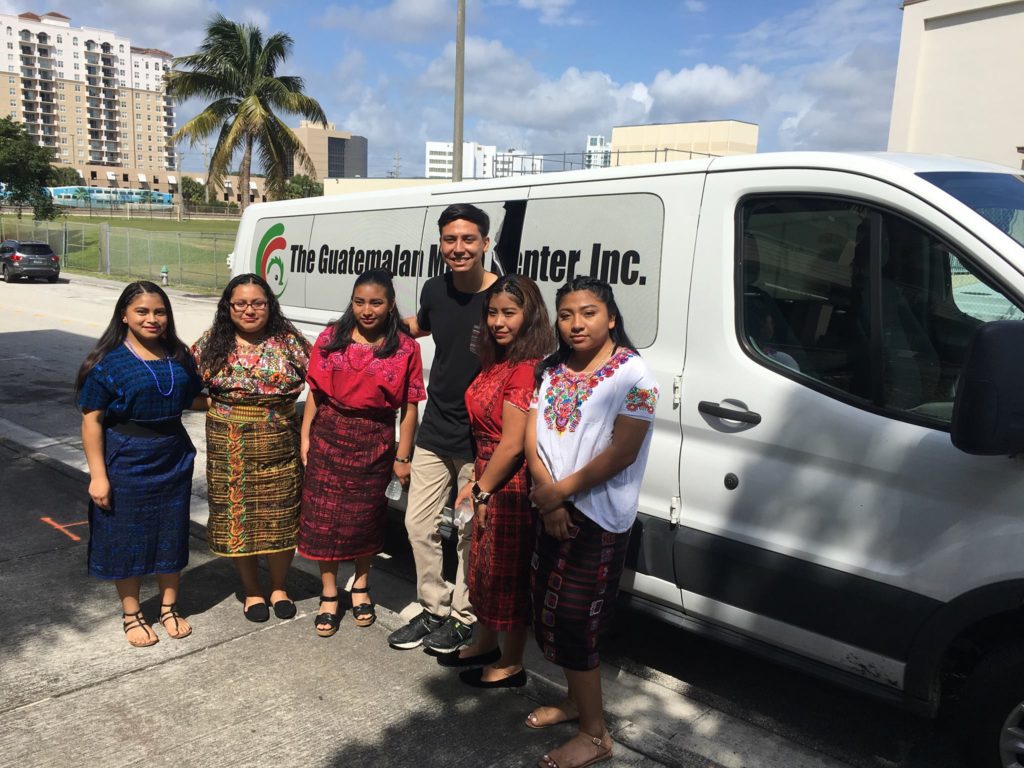Men have been telling women to shut up for at least 3,000 years. But the Maya Girls of Fort Worth High School didn’t get the memo.

Lorena Felipe Sebastian Daniela Domingo, Angela Domingo, Magdalena F. Francisco and Ramona Francisco Pedro are persistent resisters. Amidst the fear-mongering of present-day anti-immigrant policy, hate speech and difference shaming, the trilingual Florida teenagers are boldly defying cultural erasure and isolation by inserting Maya people and languages into the discourse.
The Maya Girls create informational illustrated videos with public service information in Mam and Q’anjob’al, two ancient Maya languages still spoken in Guatemala, Mexico and the U.S.
The project grew out of a community service graduation requirement and a desire to strengthen their community, which is made up of many refugees who don’t speak the local languages of English or Spanish, but rather a Maya language. (Palm Beach County is home to the fourth largest Guatemalan population in the U.S.) Their goal is to break social isolation and overcome fear by providing access to programs designed to support parents and families—public service bulletins, legal advice for asylum and visa applications or even crucial emergency announcements like hurricane warnings—and stimulate pride in their ancestral Maya civilization, one of the most advanced and longest lasting of human history.
The Maya Girls are transforming a local need into globally applicable solution. They’re also showcasing how key language is to both short- and long-term survival.
Mayan isn’t one language, but a linguistic family of 22 different languages tracing back 5,000 years. That means that speakers of Mayan Mam or K’iche’ don’t understand those who speak Q’anjob’al or Q’eqchi’—and that, because many Mayan speakers don’t read or write in these languages, they are in danger of dying out.
When languages disappear, so do the living cultures and human stories embedded within them. Preserving Maya stories of survival, in spite of repeated violent attempts to literally be wiped out of existence, requires the preservation of their languages, strong sense of community and deep respect for and understanding of Mother Earth. Most history textbooks declare the Maya disappeared with Spain’s 16th-century conquest.
When the Maya Girls announced, “Hello, good afternoon, we are the Mayan Girls” in English and then Mam at March 2019 Philanthropy Tank Live Pitch Event, they literally and symbolically reaffirmed Maya presence in a space from which for centuries power elites speaking Spanish and English have sought to eliminate them.
They made their point, and their pitch succeeded. After the event, investors provided $15,000 for digital equipment. In order to ensure long-term success, the Girls are building expansion and continuity into their plan for when they graduate this year and training other Mayan-speaking teens to replace them.
The Maya Girls brilliantly combine creative solutions forged from compassion and love to combat serious existential threats. They inspire indigenous and non-indigenous young women worldwide to speak the languages of collaboration and humanity. They speak through their voices and bodies, adorning themselves with richly symbolic traditional guipiles (blouses) and skirts.
Their work reiterates the declarations of Maya women I’ve interviewed: “We’re still here!” That’s not what 16th-century conquistadors wanted to hear, and it isn’t what 20th-century corporate investors want to hear, either.
Maya peoples have refused to shut up or get out of the way of so-called progress for centuries. They endure. And so, we persist.





